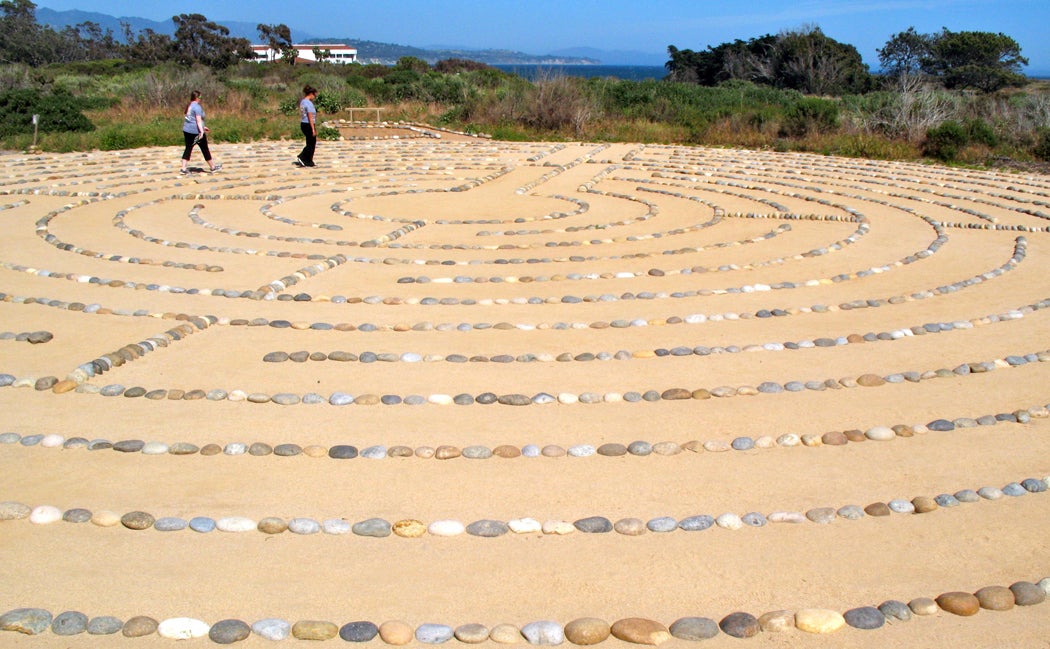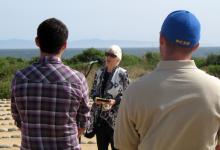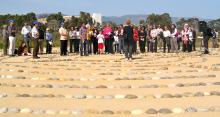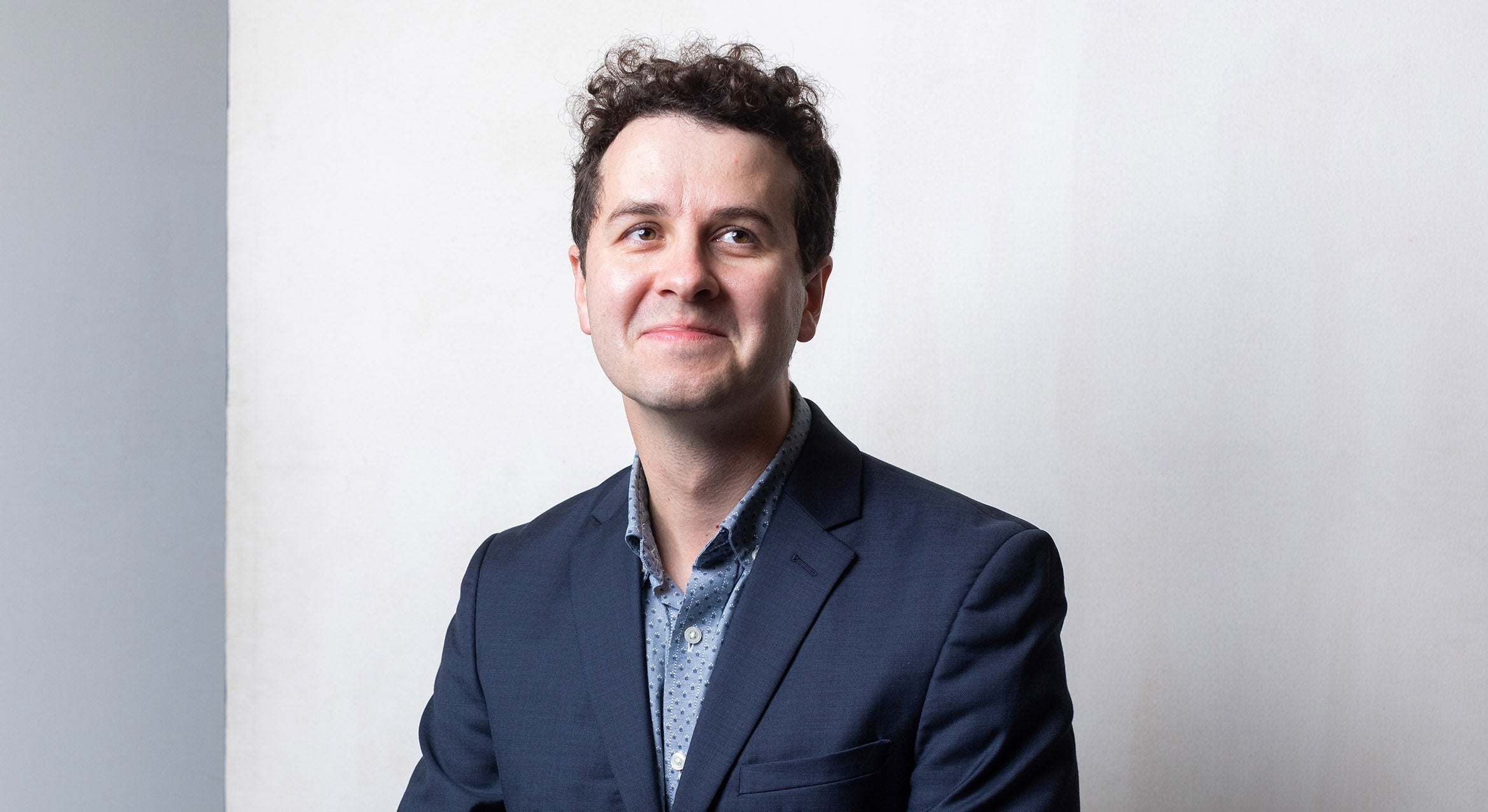


Carol Geer is hoping that the new Labyrinth Trail on UC Santa Barbara's Lagoon Island will be the most serene and inspirational six-tenths of a mile you'll ever walk.
Geer, who retired from UCSB in 2000 after 21 years as the director of Counseling and Career Services, and executive director of Student Development Services, suggested building a labyrinth somewhere on campus several years ago. She's also the driving force who worked to make it happen. And, she's the donor who generously provided the funds to pay for it.
"The notion of this grew out of our work in Student Affairs," Geer said. "We observed how difficult it was for students, staff, and faculty to find a quiet place on campus to be alone just to think and sort out things. The campus is an exciting place of learning and living, but even positive stimuli can be stressful. The goal was to provide a place and a process for finding the serenity and balance that comes from the interaction of mind, body, and spirit with nature."
The labyrinth was constructed over a two-month period, but it took nearly five years to clear all of the hurdles that might have blocked the project. "The Labyrinth would not have happened without my former colleague, Carol Geer," said Michael Young, vice chancellor for Student Affairs. "There were several points where the idea looked like it was dead, but Carol resuscitated it each time. She held fast to the vision she had, and she overcame each obstacle."
Those hurdles included finding an appropriate location and gaining approval from various campus and governmental committees, including the Coastal Commission, which oversees environmentally protected open spaces near the coastline. Geer initially was hoping to have the labyrinth built on Campus Point, but the area is considered sacred Native American ground, so Lagoon Island was the next logical choice, according to Lisa Stratton, director of ecosystem management for the Cheadle Center for Biodiversity and Ecological Restoration (CCBER). Stratton supervised the clearing of the area and is guiding the two-year restoration of native plants surrounding the labyrinth - another project funded by Geer.
The Division of Student Affairs was the campus sponsor of the labyrinth, working with relevant offices and departments at UCSB to help get the project through the various reviews and approvals, as well as the actual construction, according to Yonie Harris, dean of students. "The labyrinth seemed to capture the hearts and minds of everyone who heard about Carol Geer's vision for her gift to the campus," Harris said.
Made out of decomposed granite and river rocks, the labyrinth is built to Americans with Disabilities Act (ADA) specifications, according to Stratton, with paths wider than a normal labyrinth, to accommodate wheelchairs.
Geer explained why she was determined to have a labyrinth become a part of the campus. "Intuitively, it just came to me that a labyrinth would provide a pattern and a process for respite and renewal that would be beneficial to its users," she said. "The labyrinth is a universal cultural symbol used since ancient times for contemplation and meditation. It is often viewed as a metaphor for life's journey."
Harris added: "When a person walks the labyrinth, he or she finds a place of calm that allows meditation, reflection, and rejuvenation. The beautiful location of the labyrinth –– on the bluff above the Pacific Ocean –– invites an appreciation of nature in a very special way. There are sights, sounds, and scents of nature that have tremendous restorative power."
"I hope that the Labyrinth Trail walkers will carry the peacefulness of their experiences in their memories to sustain them through the presses and stresses of daily life," Geer added.
The Labyrinth Trail is free and open to the public. Access to lagoon island is via a path southeast of Manzanita Village, which is located on the southwest portion of the campus.



